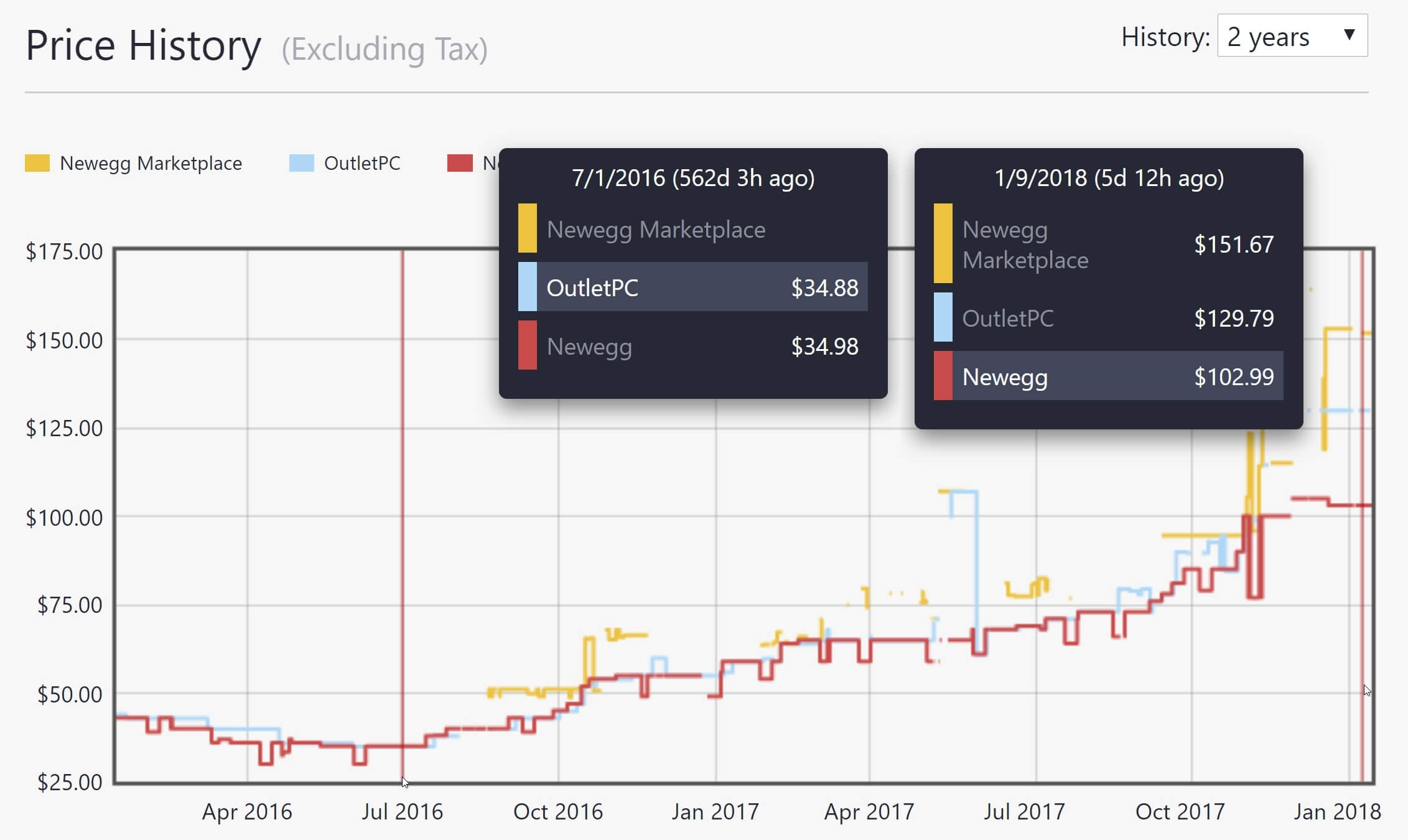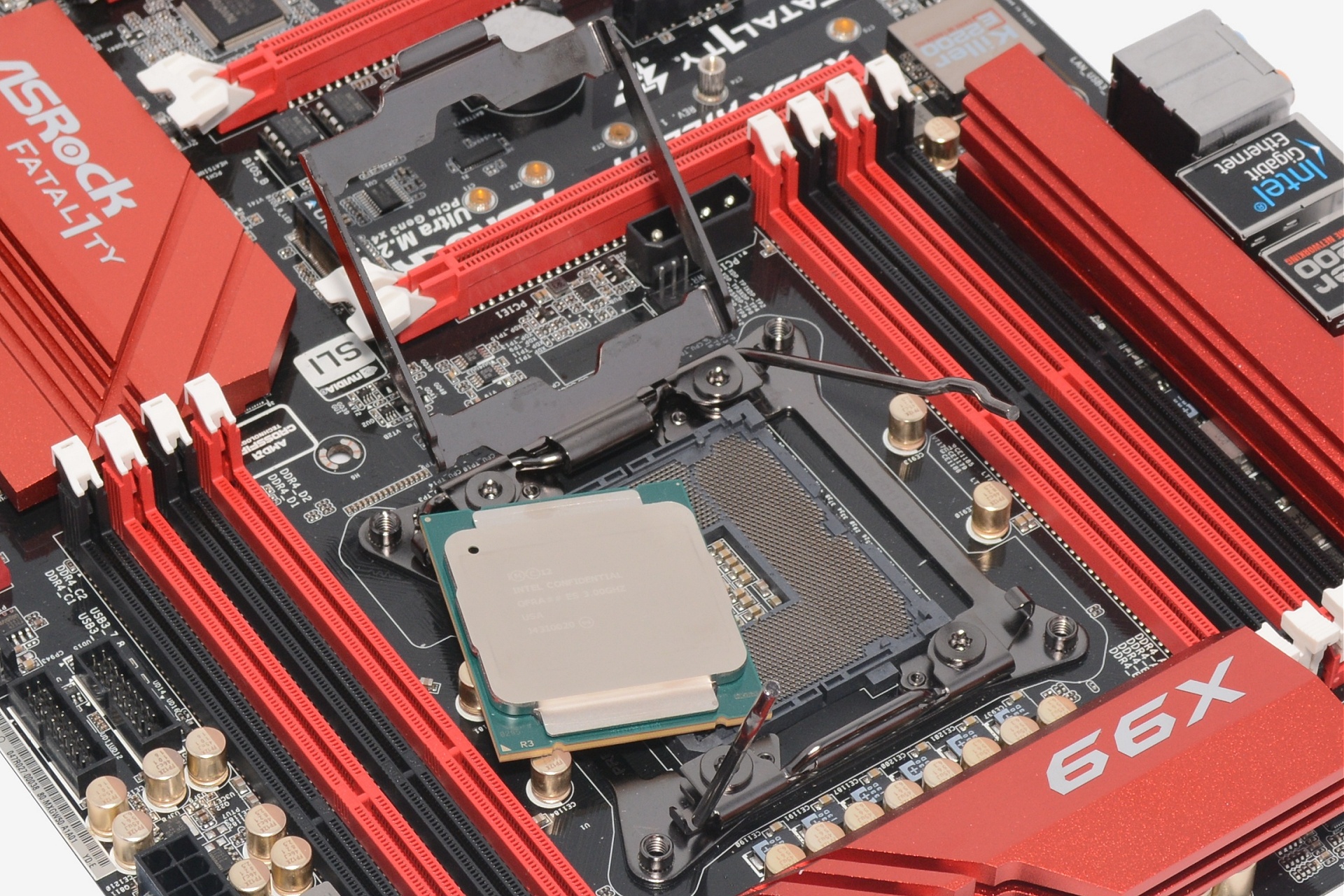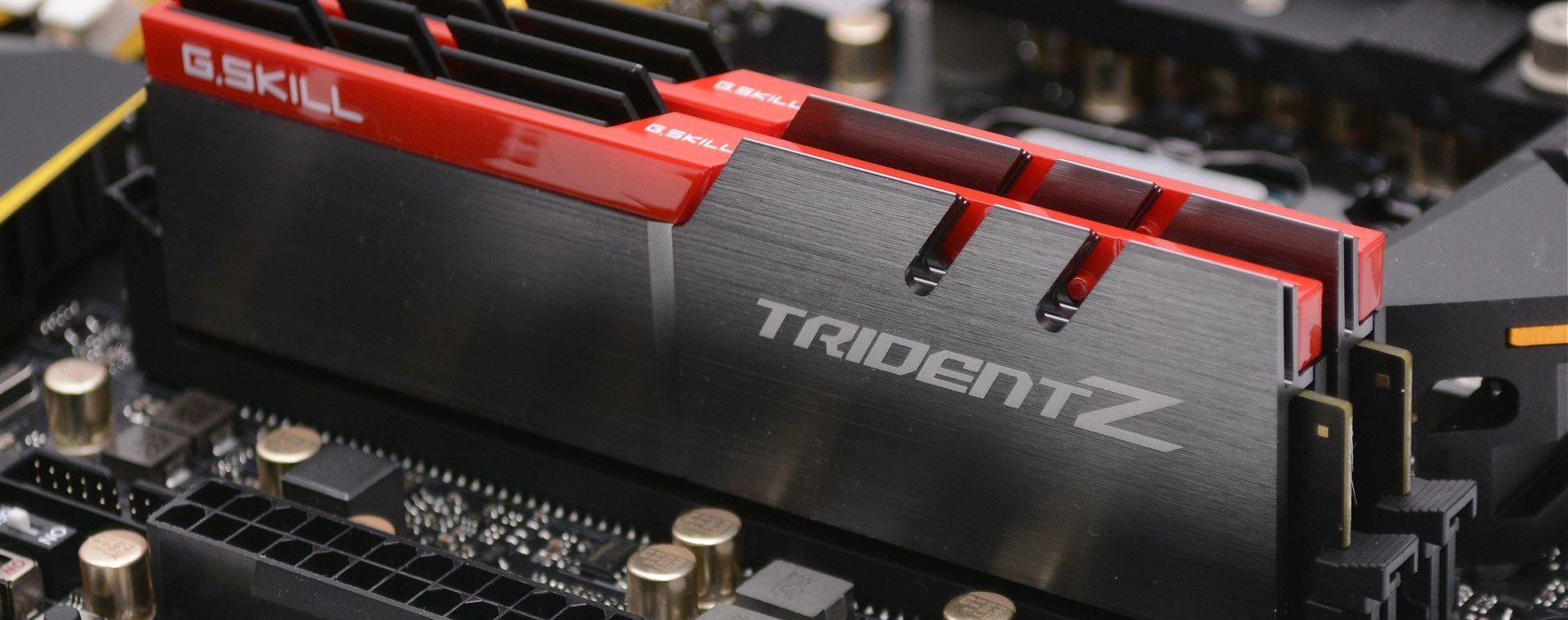The Watch Mother of Mine Onlinepast twelve months turned out to be some of the most exciting times we can remember for building a new computer. Last March saw the launch of Ryzen ending half a decade of AMD being 'bulldozed' by the competition. From that point forward it was busy for PC hardware, including the release of new graphics cards and Intel having a second go at things with Coffee Lake after an underwhelming Kaby Lake launch. However, for as much as there was to be excited about regarding computer hardware in 2017, there was plenty to be upset about as well.
Unfortunately, some of these problems have gotten worse and will probably continue to worsen throughout 2018, which is going to make it increasingly difficult to build a PC. Part one of this series will be dedicated discuss DDR4 memory pricing and why it's so high.
RAM pricing is currently a big issue plaguing those wanting to build a new computer or even update an old one. From July 2016 to July 2017, the market saw a 111% increase for the average selling price of DDR4 memory, and it has continued to increase since then.

An 8GB DDR4-2400 memory kit went for around $35 in 2016. A year later you could expect to pay a little over $70 for the same product. Today you're looking at an asking price of at least $90, or 170% more than what we were paying roughly 18 months ago.
But why is this? First and foremost, it's an issue of supply and demand. And while it's difficult to predict exactly when supply will improve, most reports suggest this won't happen until late 2018 when manufacturing of 64-layer and 96-layer 3D NAND flash reaches maturity. Until then, demand will continue to heavily outweight supply.
So, okay, it's a supply issue – but why? What's the main driver behind either supply decreasing or demand increasing? I believe we've been faced with a sort of double whammy.
The major DRAM suppliers shifted focus away from DDR4 production due to tight margins, investing elsewhere, while growth in the traditional desktop sector over previous years was slow and nobody wanted to pay a premium for DDR4 products, resulting in a loss of interest from manufacturers who couldn't meet their planned targets and returns.

With limited demand in late 2014 with Intel's Haswell-E and Haswell-EP range which continued in 2015 with Skylake and then again 2016 with Broadwell-E, the limited supply wasn't an issue. However, in 2017 we saw a rapid shift in market demand toward desktop computing, not just Intel but now also AMD were shipping processors supporting DDR4 memory.
Perhaps an even bigger factor, the smartphone industry has increased demand of not just DRAM but NAND as well. It's worth highlighting that it's a different type of DDR4 memory which is produced for the mobile market (Low Powered DDR4 or LP DDR4), and manufacturers such as Samsung make more profit selling LPDDR4 memory in premium smartphones.
With demand outweighing supply, prices increased and DDR4 margins were no longer tight. By mid-2017, pricing of memory modules soared significantly and unfortunately it doesn't look like manufacturers will be ramping up production any time soon.
According to market research firm DRAMeXchange, the three major DDR4 suppliers (Samsung, SK Hynix and Micron) slowed down their capacity expansions and technology migrations to maintain prices in 2018 at the same levels seen in the second half of last year, which is presumably related to their interest in sustaining strong profit margins.
The construction of new fabs is underway to help the strained supply but they won't be ready for mass production until 2019 at the earliest. It's predicted by Gartner that DDR4 pricing will crash in 2019 and history would suggest this is likely to happen as that's the cycle we go through every few years with memory pricing.
China has the potential to change things here with its aggressive approach to the semiconductor market, which could cause pricing to become even more unpredictable. Chinese memory could flood markets worldwide causing pricing to plummet. Right now there is a large number of Chinese fabs being built and it is expected that the country will take second place for investment in semiconductors this year as it equips the many new fabs that began construction in 2016 and 2017.

It's also been reported that China's National Development and Reform Commission is investigating the possibility of DRAM price-fixing between the major industry players, and this has of course been sparked by the price surge we've been talking about. If found guilty, it's hard to predict what the ramifications would or could be, so we'll have to see how that story plays out. It would appear as though they do have quite a bit of power here, as SK Hynix and Samsung both have a number of facilities in China.
So if you have a choice: hold off on building your new PC until later in 2018 (or longer) or simply accept the hit on memory pricing. PC gamers will ideally want 16GB these days and those kits cost at least $170, with premium memory priced closer to $200. Granted, the same kit would have costed around $75 in the good old days, but try not to dwell on that.
Inflated DDR4 memory pricing is only one of the problems you can expect to face when looking to upgrade or build a PC in 2018, and in the next part of this series we're going to discuss what's going on with GPU pricing and what we can expect later this year.
2017 was an exciting year for PC hardware but it wasn't all roses. The warning signs we saw are painting more difficult in 2018. In this 3-part series we discuss why building a new gaming PC is not a great idea at the moment, or at the very least, it's going to come at great expense.
 Best travel deal: Score the Frontier Go Wild! summer pass for just $399
Best travel deal: Score the Frontier Go Wild! summer pass for just $399
 6 ways safety could have been improved in that epic 'Game of Thrones' battle
6 ways safety could have been improved in that epic 'Game of Thrones' battle
 One 'Game of Thrones' actor has revealed he's not in Season 8
One 'Game of Thrones' actor has revealed he's not in Season 8
 Chris Rock is set to star in 'Fargo' Season 4, premiering in 2019
Chris Rock is set to star in 'Fargo' Season 4, premiering in 2019
 New Zealand will ban plastic bags for good
New Zealand will ban plastic bags for good
 The fall of Maya society was bloody and worsened by a 200
The fall of Maya society was bloody and worsened by a 200
 Selena Gomez fell at her concert last night, three days after Justin did the same
Selena Gomez fell at her concert last night, three days after Justin did the same
 Oprah imagining the perfect date night is the only good thing on the internet this week
Oprah imagining the perfect date night is the only good thing on the internet this week
 #rateaspecies is basically Yelp reviews for zoo animals
#rateaspecies is basically Yelp reviews for zoo animals
 Apple is killing its App Store affiliate program
Apple is killing its App Store affiliate program
 Best JBL deal: Save $10 on the Go 4 at Amazon
Best JBL deal: Save $10 on the Go 4 at Amazon
 'Snapchat dysmorphia' is a thing — and plastic surgeons are worried
'Snapchat dysmorphia' is a thing — and plastic surgeons are worried
 Huawei claims it could become the world's largest smartphone maker next year
Huawei claims it could become the world's largest smartphone maker next year
 For a brief moment of bliss, Facebook was down
For a brief moment of bliss, Facebook was down
 Nintendo Switch 2 release date, price announced
Nintendo Switch 2 release date, price announced
 Surprise! 'Fortnite' is blowing every game out of the water on Twitch
Surprise! 'Fortnite' is blowing every game out of the water on Twitch
 Drake and his glorious robe had a great weekend
Drake and his glorious robe had a great weekend
 Running down memory lane with Trump's just
Running down memory lane with Trump's just
 Best Apple TV+ deal: Get 3 months for $2.99 monthly
Best Apple TV+ deal: Get 3 months for $2.99 monthly
 QAnon conspiracy blew up because of a bigger internet problem
QAnon conspiracy blew up because of a bigger internet problem
Best 4th of July deals 2024: Save on robot vacuums, headphones, kitchen items, and moreU.S. spacecraft on the moon finally sends home the money shotJD.com gradually rolls out Alipay integration as China pushes for eWeChat removed from US’s soCitic Press to launch Shadow Deity Illustrations inspired by Black Myth: Wukong · TechNodeTicketmaster hackers are holding data of 440,000 Taylor Swift ticketholders for ransomBest 4th of July laptop deals: Save hundreds on a new laptopA comet could photobomb the 2024 solar eclipse. Here's where to look.Spain vs. Germany 2024 livestream: Watch Euro 2024 quarter final for freeYouTube has delivered an important update to its audio eraser toolHuawei and China’s GAC make new progress on EV tieBest Buy's 4th of July sale 2024Argentina vs. Ecuador 2024 livestream: Watch Copa America quarter final for freeCES 2025: Ling.ai debuts childHow the experts describe their solar eclipse experiencesSpaceX Starship launch stream: Watch the third launch live01.AI refutes rumors of selling teams to Alibaba · TechNodeWebb telescope spots proof of the first stars to light the universeBest Buy's 4th of July sale 2024WeChat removed from US’s so NYT Connections Sports Edition hints and answers for April 17: Tips to solve Connections #206 13 Good Games You Can Play on Laptops and Budget PCs FreeSync 2 Explained NYT Connections hints and answers for April 26: Tips to solve 'Connections' #685. How to Reboot and Reset Android Devices Get Rid of Windows 10 Ads, Office Offers and Other Annoyances Trump signs AI education order to train K NYT mini crossword answers for April 24, 2025 Best Samsung Frame deal: Free Music Frame with Frame Pro art TV purchase Barcelona Open 2025 livestream: Watch live tennis for free Skywatching is lit in May, says NASA NYT Strands hints, answers for May 1 U.N. confirms the ocean is screwed The internet is talking like Kevin from 'The Office' now Best tablet deal: Save $45 on Amazon Fire HD 10 tablet Things Intel Needs to Fix Amazon Book Sale: Shop early deals now DDR4 Memory at 4000 MT/s, Does It Make a Difference? Best roborock deal: Save $400 on Q5 Pro+ Robot Vacuum and Mop Asus VivoWatch 6 AERO measures blood pressure and ECG
2.1173s , 10133.53125 kb
Copyright © 2025 Powered by 【Watch Mother of Mine Online】,Co-creation Information Network